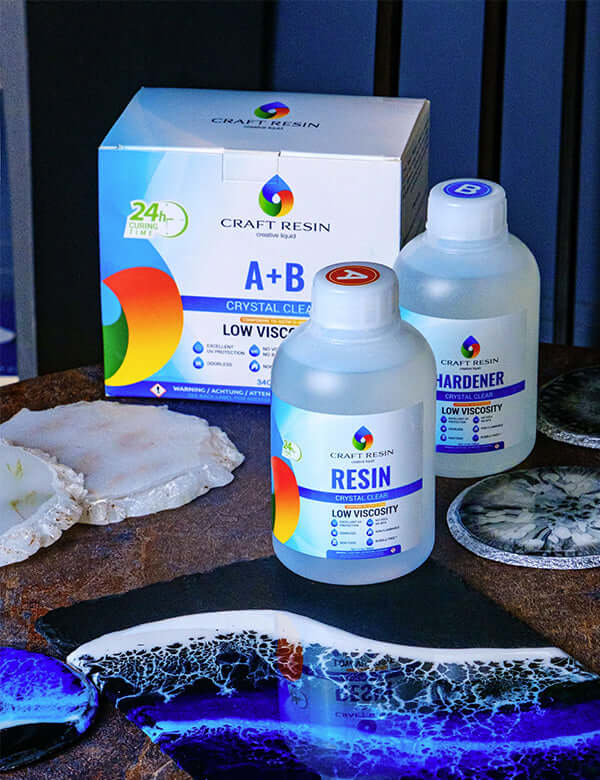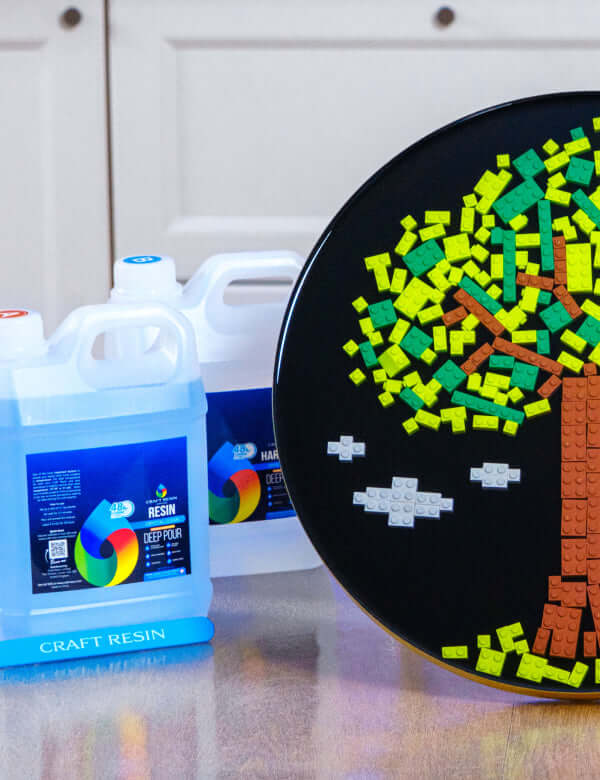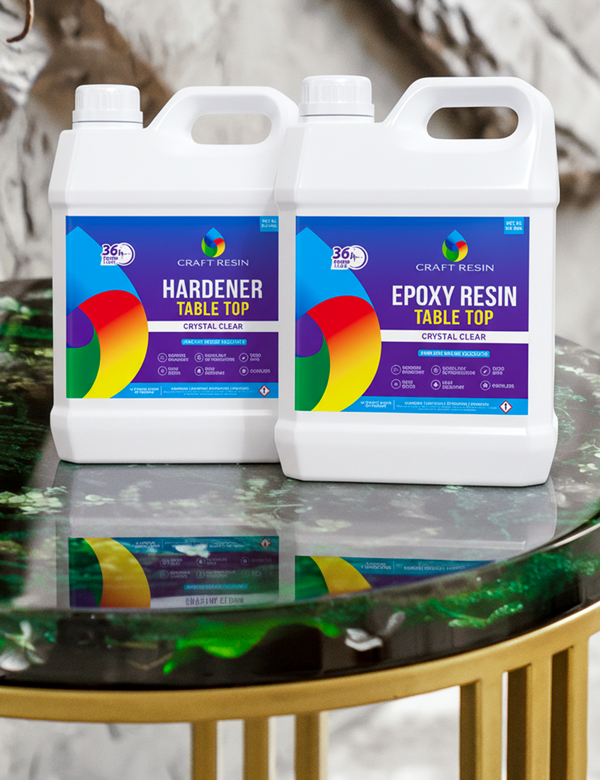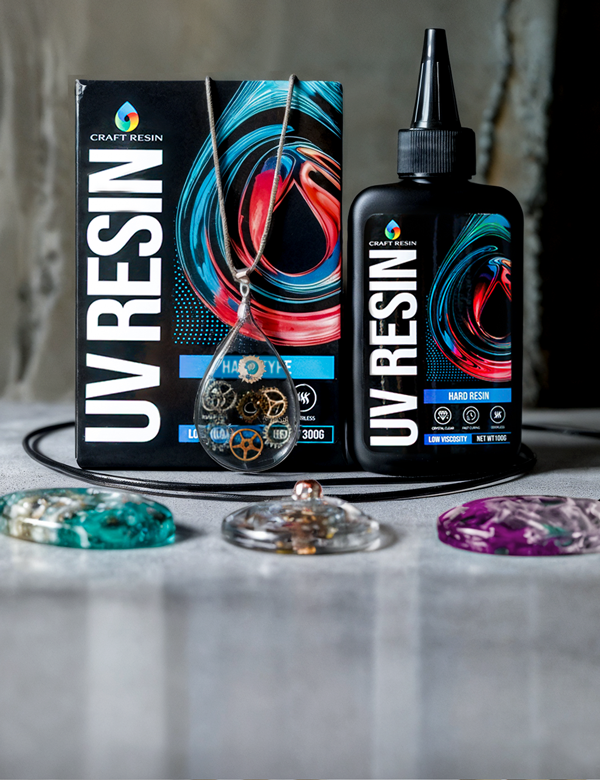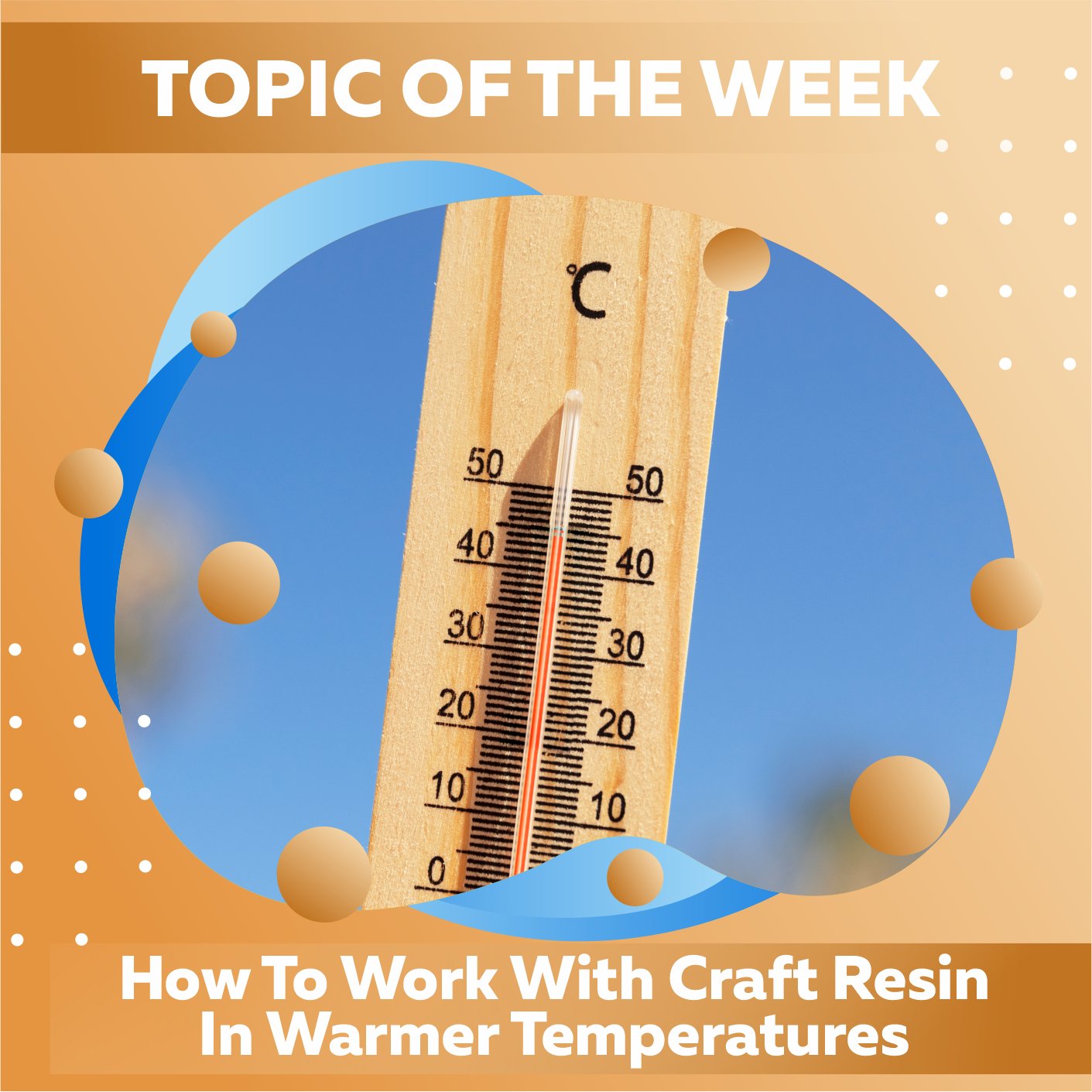Temperature is one of the most important factors to keep in mind and monitor, when working with Craft Resin. Having the wrong temperatures in your working environment as well as your resin can create all kinds of issues with your resin projects.
The idea temperature when working with Craft Resin is between 21-24C or 70-75F.
The warmer the temperature the quicker your resin projects will cure. If your workspace drops below these temperatures during working with your resin mix and also for 24 hours afterwards, issues can occur.

As the weather gets warmer please do monitor the temperature in your workspace and curing area to make sure it doesn’t drop below these. Even though it can feel like the weather is getting warmer it still might not be warm enough in the room to work with resin. A temperature gauge, in the room you're working with your projects in, should help to monitor these temperatures throughout the process.
Making sure your resin mix is also warm can be really beneficial on your small to medium sized projects. Warming your resin/hardener in their enclosed bottles in a warm sink before mixing them together can help get rid of micro bubbles that can make your projects look cloudy. If your bottles have been stored in a warm temperature though you can skip this part.

Issues can start to occur when mixing larger amounts of resin and hardener together if using our Low Viscosity resin, you may need to lower the temperatures for this part to control the exothermic reaction during warmer weather. The exothermic reaction is the reaction that occurs when the resin and hardener are mixed and heat build up starts to happen which will start the curing (hardening) process off.
You will need to monitor this more during the warmer months as the outside temperature will naturally increase the temperature of your resin/hardener.
When this heat builds up and cannot escape, it causes the epoxy resin mix to cure faster because epoxy resin cures faster at higher temperatures. This creates a snowball effect, as the heat from the faster curing resin mix, generates even more heat it gets hotter and hotter. This is why a gallon/4 litres of low viscosity epoxy resin mixed all at once will turn solid in under 10 minutes. Not only will you have cured resin very quickly, but this can also result in the cured epoxy resin cracking because of the difference in temperature between the top and bottom of the container.
When it cures very quickly and isn't controlled it is called uncontrolled exotherm. When the resin mix does flash cure like this the heat build up can produce smoke and can even give off dangerous vapours or make nearby objects catch fire (so please keep the area you resin far away from things like your curtains!).
If you are using our new Deep Pour resin, this is designed for use in larger projects so you can mix a larger amount at once and the heat build up won't be too much, but it will take longer to cure, so leave at least 48 hours for your Deep pour projects to cure as a minimum.
If you are creating projects like river tables, then make sure you use our Deep Pour resin to avoid flash curing. This will stop this happening even in the warmer months.

If you have been using a heat mat to cure your work on, you may need to remove this while the temperatures are higher.
You might find that with higher temperatures outside you can also open more windows increasing the ventilation in your work area. This is a great thing when using epoxy resin as we always stress the importance of ventilation for safety, but we would still urge you to consider using a mask/respirator, as you can never be too sure if a window open is enough ventilation to keep you safe, it’s always best to over protect yourself.

Even though you can work outside, temperature does play a huge role in how your creations turn out. Warm and dry conditions are best when working with epoxy resin. You need to ensure the temperature is right and also that you ideally have no more than 50% humidity. You may want to set up a thermometer and a humidity gage to ensure the environment stays within these parameters, even if working outside.
The other thing to consider if you do work outside is, epoxy resin is a sticky liquid substance and you need to ensure you work is as clean an environment as you possibly can. Try to ensure you keep your work away from dust, dirt and pet hair, as these items seem to be attracted to resin and if they are close to your work may find their way into your project. To avoid this once you have poured your work into its mold to cure, simply place a protective cover over it.
You can’t always ensure that temperatures or the weather won’t drop considerably or change over night. So when leaving your work to cure please make sure that it is fully protected from the elements and that the temperature is still between the guidelines for the first 24 hours of curing. Any fluctuations can cause issues with your project.
We hope this guidance helps you to transition to a different season and with it different temperatures. Our team is on hand if you have any issues at all with your resin or need any guidance please do use the contact us form to get in touch.
Topic Of The Week Giveaway:
We have attached a giveaway to these Topic Of The Week announcements on our Instagram platform, this is helping us to spread the knowledge of how to use epoxy resin further, but also enabling anyone who helps us share this information to win free resin and mica powders.

To enter the weekly giveaway please see the latest post pinned to the top of our Instagram feed and follow the instructions to enter:
Team Craft Resin

